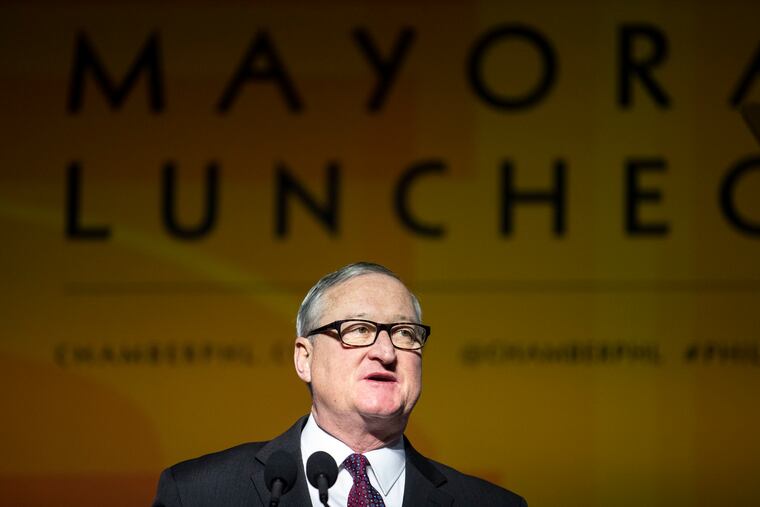What does Philadelphia have to show for an extra $1 billion in spending? | Editorial
The city has hired more than 900 employees since Fiscal Year 2017. At the same time, overtime spending has increased.

How much money would it take to solve Philadelphia’s most pressing problems?
That’s not an easy question, in part because not all problems respond to money, but also, the problems of this city are big and complex. Poverty, opioids, gun violence leading to homicides are among the biggest.
For the sake of argument, let’s say we had a billion dollars to throw at these problems. Surely, if that amount of money didn’t solve these problems, it would at least make a dent, right?
Based on recent history, the sad fact is it wouldn’t. The city has increased spending by $1 billion — most of that in the last four years. Homicides have increased. Neither poverty nor overdose deaths have seen significant decline.
When Mayor Jim Kenney delivers his budget address to City Council Thursday, he will undoubtedly be touting some of the investments the city has made, primarily in education, and will point to an increase in revenues to the city, primarily through property taxes and the soda tax.
Last week, reports from both the Pennsylvania Intergovernmental Cooperation Authority (PICA) and the controller’s office released reports that raise red flags on some of the city’s spending trends. Two areas of particular concern: salaries and overtime. The city has hired more than 900 employees since Fiscal Year 2017. At the same time, overtime spending has increased, from $168 million in FY17 to $181 million in FY19. According to the controller’s report, the city spends about $8K per employee on overtime.
Staffing is supposed to reduce overtime costs. It’s baffling that this hiring spree — which is also a big driver in future pension obligations — has not reduced overtime.
When the recession hit in 2008, the city had to make drastic cuts from its $3.68 billion budget. Some argue that this current spending — matched, it must be noted, by increased revenues — is more a matter of restoring city government to pre-recession levels. The problem is that before the recession hit, the bloated city payroll and the size of government was a concern, and "streamlining” was the byword. We haven’t heard that word uttered for years.
The city isn’t spending money it doesn’t have. Tax revenues are up. And the city has made a big commitment to invest more money in the schools. That, and putting money in reserve funds, only accounts for a portion of the spending, though.
Cities across the country have seen increases in spending, so it’s not necessarily that Philadelphia is being reckless. But ours is a city with a history of economic turmoil — which led to the creation of PICA to begin with — and an already high tax base.
The bottom line: We should expect tangible results from this spending. In fact, in a survey of resident satisfaction the city conducted last year, the majority (67%) ranked city services as "fair” or “poor”; 31% ranked them as “good to excellent.”
If the investments the city is making are not strategically designed to make the city safer, more prosperous, and less lethal, then what’s the point?